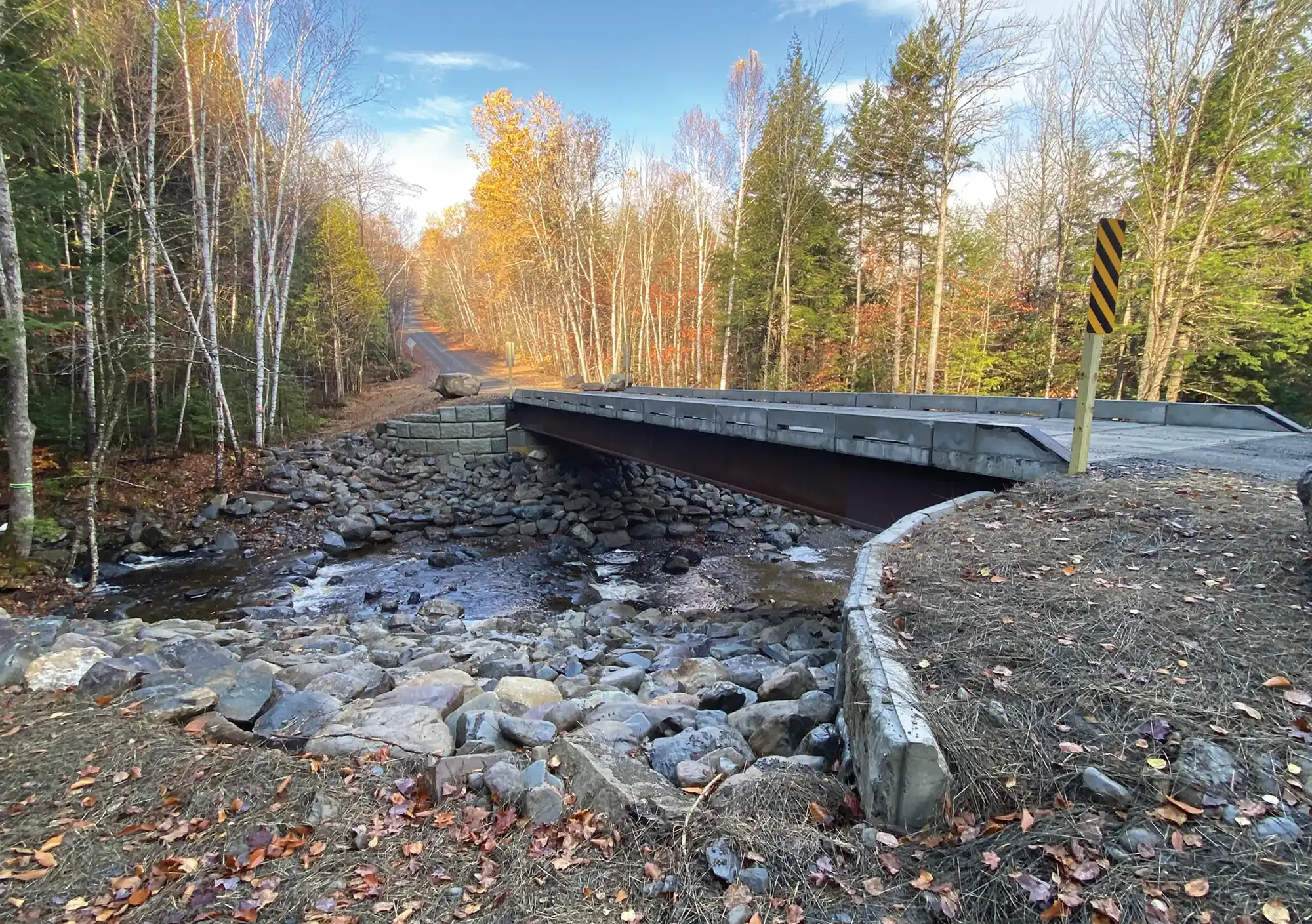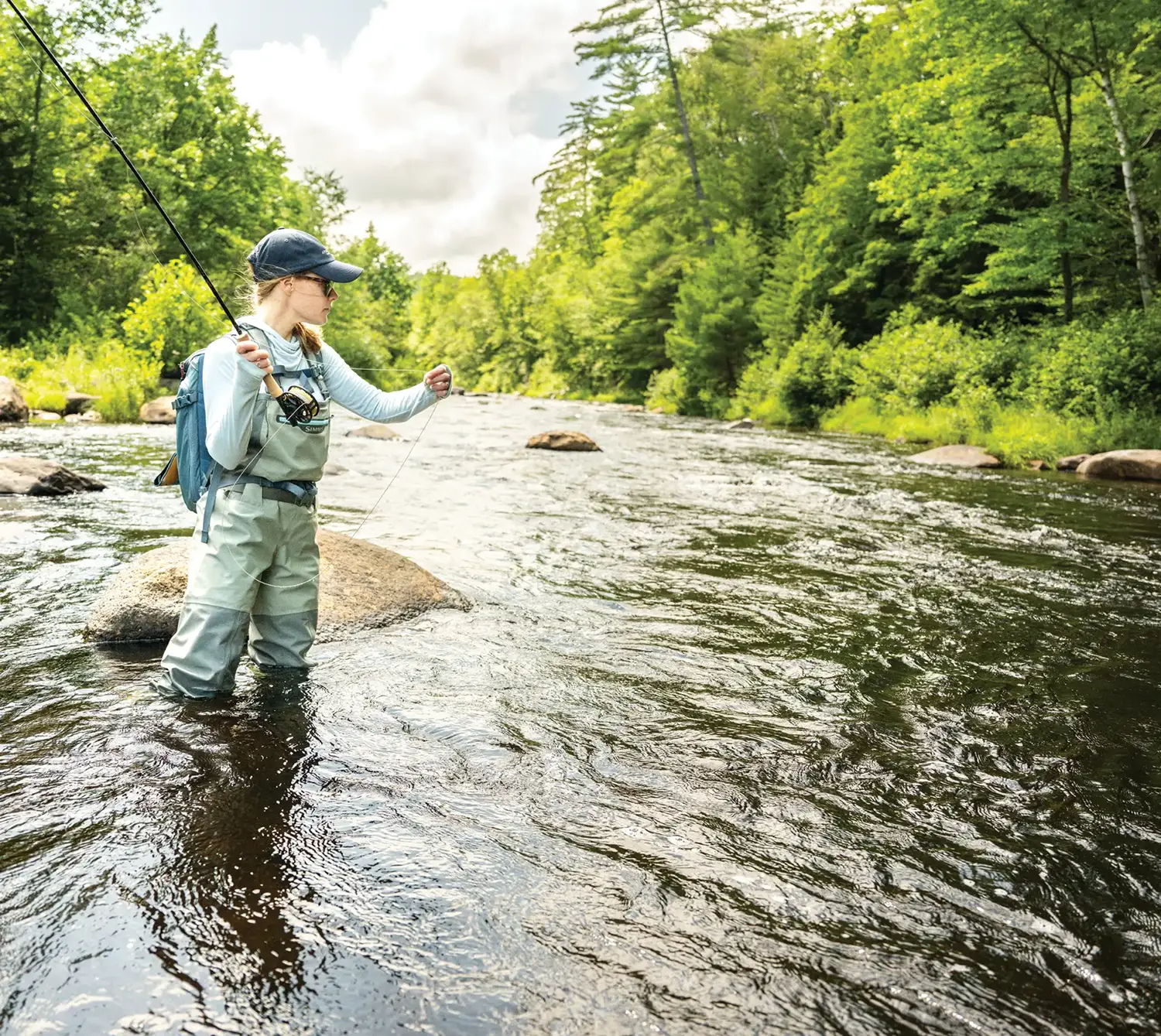
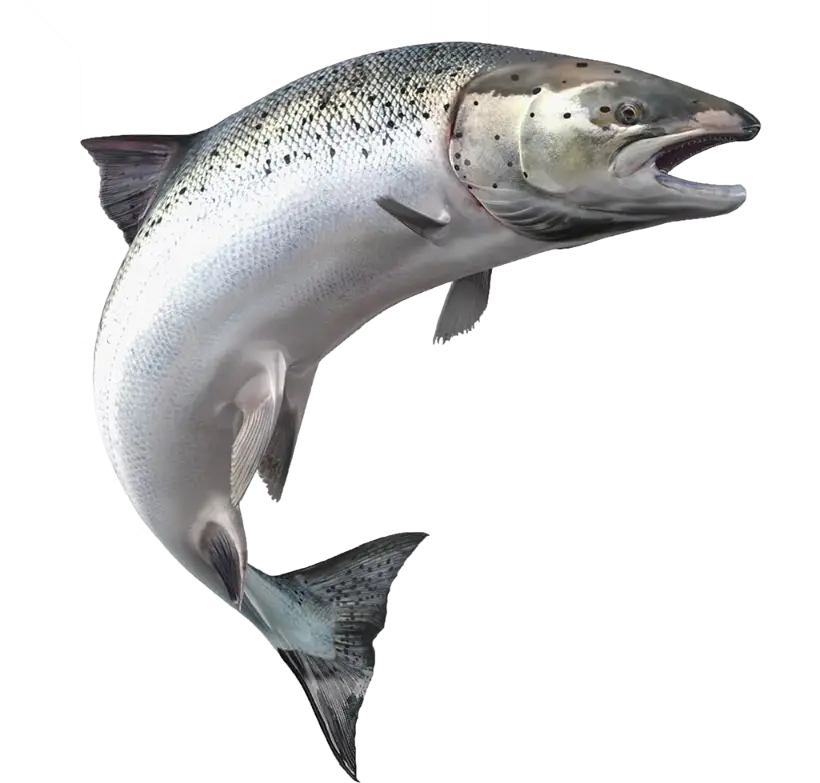
have been to Maine’s 100 Mile Wilderness, you have probably crossed over the spot without knowing it: the place where, just beyond the intersection of the Appalachian Trail, Henderson Brook slips quietly under the road. Katahdin Ironworks (KI) is the name of that road: long, dusty, remote; built to transport lumber. You likely traveled the rugged KI road in a vehicle coated with a layer of dirt, or perhaps on foot, sweating under the weight of your backpack. To you, that intersection of water, road, and trail was a blip in time, a link to somewhere else.
To a federally endangered Atlantic salmon, it’s a lifeline.
When you stand on the bank of Henderson Brook, you’re surrounded by trees, sloping hillsides, and the sound of water. There’s a feeling of layers: wind rustling the canopy above, the stream moving below, and you among the trees, lichen, and wildlife of the understory. Cold, clear water bounces off rocks, rippling and gurgling on its way over a restored streambed. As it flows past you, the water travels downstream and downhill to the West Branch of the Pleasant River. It eventually merges with the Penobscot River, which ends its winding journey in the Gulf of Maine and the Atlantic Ocean.
What you don’t see is the 90-foot-long galvanized steel culvert that has been at the center of a 10-year restoration project undertaken by the Appalachian Trail Conservancy (ATC), the AMC, and their local, state, and national partners.
When Marian Orlousky visited the site in 2021 and first laid eyes on the culvert, she was struck by its enormity. “I immediately handed my phone to the project engineer and climbed inside,” says the ATC’s Director of Science and Stewardship. She realized that a photo of someone standing inside the mouth of the culvert would be invaluable in demonstrating the magnitude of the obstruction. “While I was aware of the culvert’s dimensions and had seen many photos of it before my first visit, I was still stunned by what stood before me. None of those images accurately captured its size and presence,” says Orlousky.
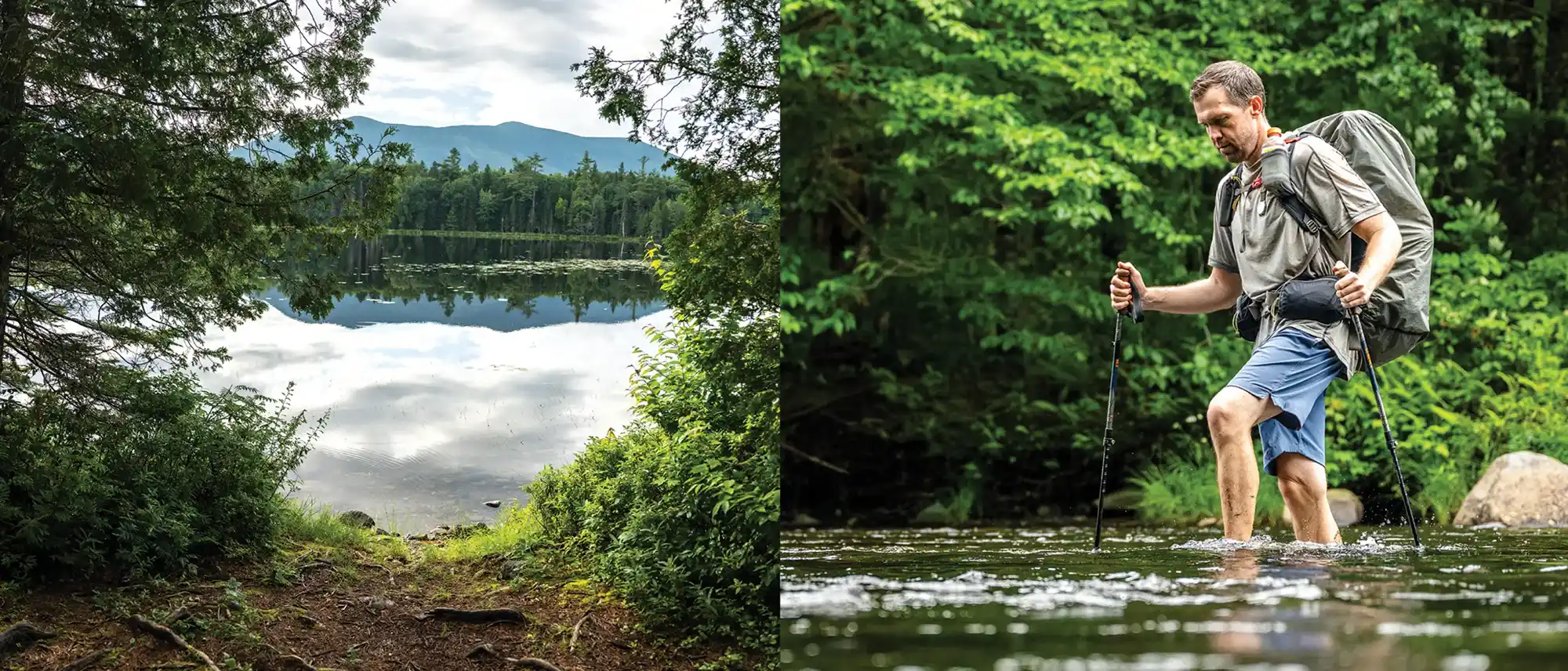
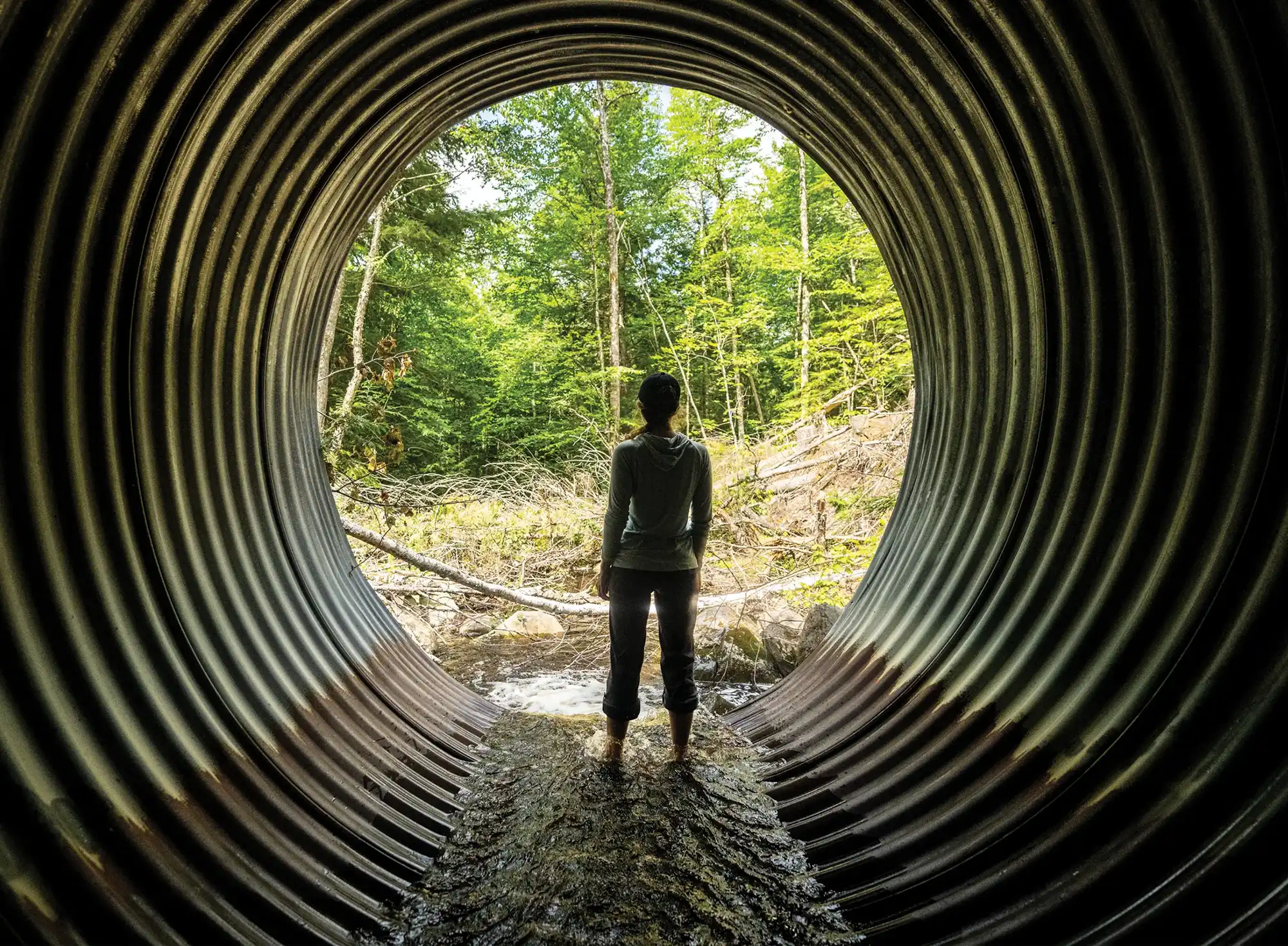
You don’t have to be a fish person to feel a little awe toward the Atlantic salmon. Sometimes referred to as the “King of Fish,” they are muscular, fast, and sleek — brown and bronze as juveniles in rivers and streams, they turn silver as adults in the ocean, measuring 28 to 30 inches long in adulthood and anywhere from 8 to 30 pounds (as much as a three-year-old human child). The colorfully speckled fish are anadromous, which means they live in both fresh and saltwater, beginning their lives in small tributaries like Henderson Brook, where they hatch in the spring and spend two to three years growing in the shady, cold water before swimming out to the ocean to mature. They’ll migrate as far as Greenland, traveling three to five thousand miles and back, as they feed and grow for up to two years at sea. Then, at around four years old, the adults are guided home by the chemical imprint of their birth waters to spawn.
Once native to nearly every U.S. river north of the Hudson River, the Atlantic salmon population was decimated by historic overfishing, poor water quality, and habitat destruction, such as dams and culverts, like the one on Henderson Brook, that block migratory movement. Alewives and eastern brook trout — for whom the West Branch and its tributaries are one of the last great strongholds — are also impacted by a degraded and fragmented habitat. Today, Maine is home to the only remaining populations of wild Atlantic salmon in the United States.
As an indicator species, the presence (or lack thereof) of Atlantic salmon helps us understand how healthy a river ecosystem is. How clean, how connected, and how diverse. “We already knew that Henderson Brook offers superior aquatic habitat, and environmental DNA sampling conducted by the U.S. Fish and Wildlife Service in 2021 confirmed that Atlantic salmon were already using the lower reaches of the brook,” says Orlousky, who has a background in biology, ecology, and resource management. “So it was clear that restoring the connectivity of the brook would be a valuable step towards restoring Atlantic salmon.”


The Henderson restoration process, which began in 2014 when the U.S. Fish and Wildlife Service identified the brook as one of the greatest priorities for fish passage remediation in the state of Maine, has taken 10 years to design, plan, fund, permit, and implement. And while the fully reconnected and accessible Henderson Brook is certainly something to celebrate, both Tatko and Orlousky acknowledge that it’s just one step in tackling the bigger issue of restoring the Pleasant River system and the greater Penobscot River watershed.
“It’s one thing to stand there and see this huge culvert and understand that it’s blocking almost the entire length of this water resource,” says Orlousky. “But there are thousands of these perched culverts scattered across the state, mostly on these small-level tributaries, and it’s the cumulative impact of all those aquatic barriers that’s really the challenge for Atlantic salmon recovery.” The availability of smaller tributaries has a significant impact on juvenile salmon (parr) production, because they serve as extensive nursery areas for young fish who spend the first two years of their lives in these waters. Research conducted by the state of Maine indicated that once accessible, Henderson Brook alone would be capable of supporting 964 salmon parr.
Luckily, as our collective understanding of watershed management improves, many dedicated people continue to drive restoration efforts. “There’s been a tremendous amount of work for decades to get to this phase of recovery by so many groups, and so many tribal nations, and we are incredibly humbled to be a part of that,” says Tatko, who grew up on the edge of the 100 Mile Wilderness in the small town of Willimantic, Maine.
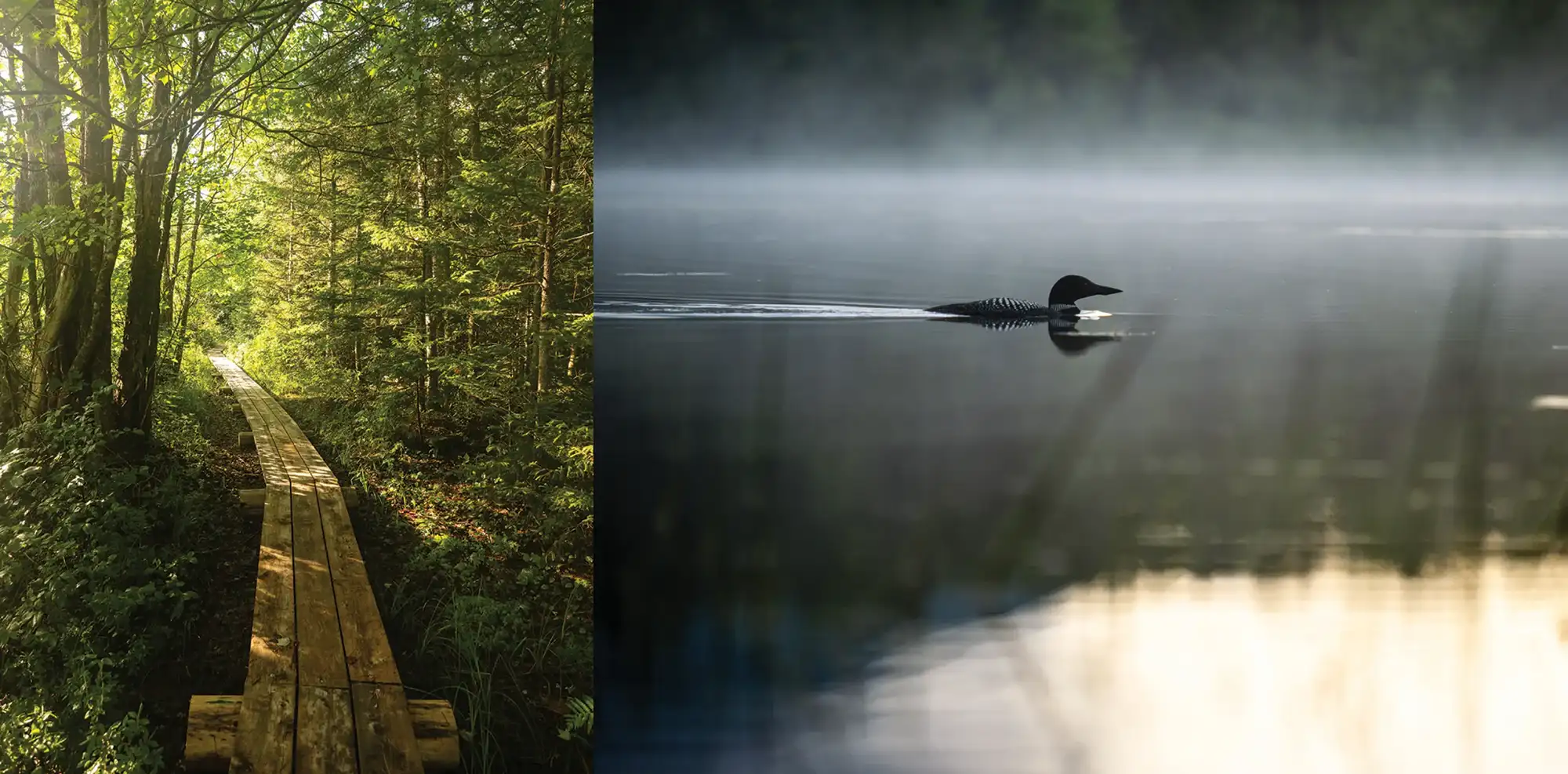
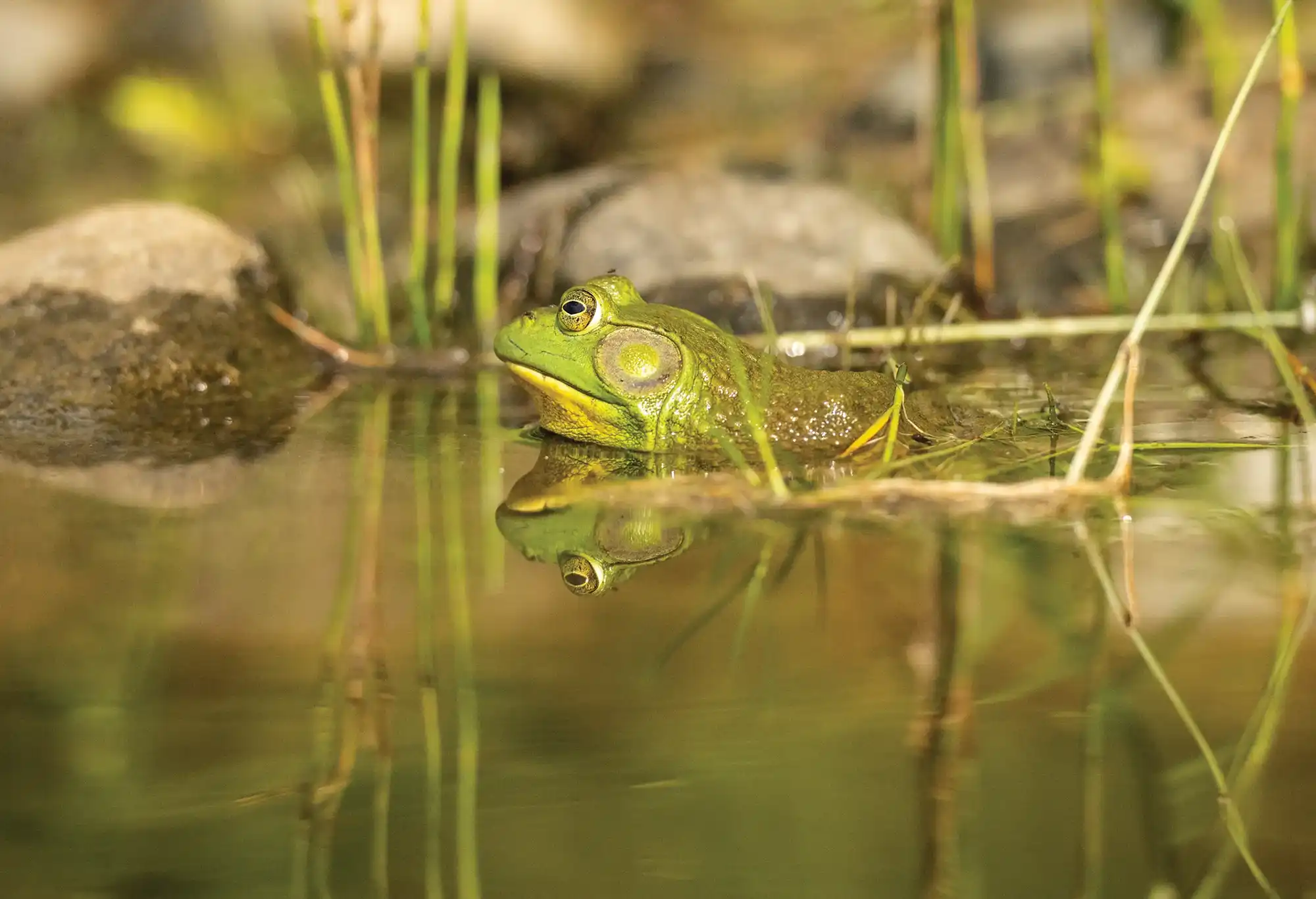
In a landscape taxed by development, the connected and conserved lands along the Appalachian Trail’s 2,198 miles offer refuge to the plethora of terrestrial and aquatic species and ecological communities that make up one of the most biodiverse units of the National Park System. This particular slice of the Maine woods — home to moose, lynx, bear, foxes, rich and vibrant plant communities, as well as countless other species — is the largest contiguous forest left in the eastern United States. It is also the largest patch of temperate deciduous forest left anywhere in the world that has escaped the grasp of agriculture and has continued to live as a forest. “That’s why these fish can return,” Tatko says. “The place is still whole. It’s still intact.”
What does it mean to be a person who sees this wholeness? Who stops on a bridge over a creek and wonders what life it supports? What does it mean to walk over a piece of land not to get to an end destination, but as an act of communion?
“The beautiful thing to me about the 100 Mile Wilderness is that I feel as though I am part of the landscape. Rather than a momentary visitor or an onlooker, I’m just one other living creature existing in it,” Orlousky says, citing the feeling of separation she often feels when visiting larger parks. “Here in the Maine woods you are depending on yourself, on where your feet can take you, on what you can carry on your back, and on your knowledge of the environment that surrounds you.”
Perhaps it was, in part, this connection that inspired Orlousky and Tatko to work in a field where they could enact change, a place where science and traditional ecological knowledge are actively being applied in service to the things they loved. Orlousky, who grew up fishing the stream behind her childhood home in Pennsylvania, just a quarter-mile from the A.T., describes holding a young Atlantic salmon for the first time during a recent visit to the site with a biologist from the Maine Department of Inland Resources: “I had a huge smile on my face, because I never imagined that I’d have the chance to hold in my hands an Atlantic salmon caught in these waters. Hopefully, with these efforts, myself and many others who come after me will be able to return to the Appalachian Trail, the West Branch of the Pleasant River, or the Penobscot and actually catch an Atlantic salmon flyfishing.”

